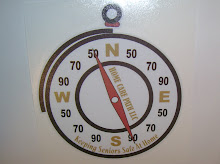Many seniors look to funds that invest in stocks as a way to enhance the estate. The words in a funds prospectus can often mask returns. Past performance numbers can be used to indicate risk.
Try to view the funds historical figures in graph form. Determine average annual return over the last 10 years. Then observe year by year results for a ten year period. The fund may show an acceptable average return, but the year to year graph can show wild swings. This shows the funds volitility.
Over the ten year period compare the funds return to an appropriate index, or bench mark. Is the fund down, when the index is down. Or does the fund consistently trail behind the chosen index, bench marks.
Realize a fund can be losing money and claim to be beating the market in a defined time frame. The fund is just not losing as much money as the market in this defined time frame.
Evaluate returns during identified bear markets. Then look at returns in the worst 12 month period. Note the worst 12 month period does not have to run January to December. This can speak to potential losses.
Financial planners look at a funds worst draw down, the maximum cumulative loss. Reviewing loss from peak to trough is considered the ultimate measure of a funds risk.
Home Care Path www.homecarepath.com encourages seniors to meet with a qualified financial planner when considering stock and mutual fund investing.
Monday, November 22, 2010
Subscribe to:
Post Comments (Atom)

No comments:
Post a Comment